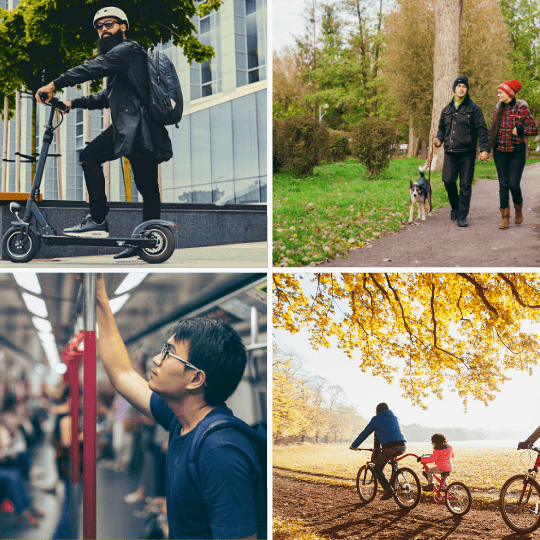Guest Post by Brett McIff
Brett McIff, PhD is the Physical Activity Coordinator for the EPICC Program at the Utah Department of Health. His research has focused on the perception of the built environment as it pertains to physical activity levels. Find out more about the EPICC Program at www.choosehealth.utah.gov.
Next time you hop in your car to run to the store or drive your child to school, take a moment to think about how things have changed over the past several decades: rates of children walking to school have dropped from 48% in 1969 to 13% in 2009, while more than 85% of adults drive to work every day. As Utah’s demographics, shopping habits, and type of work have evolved, the way we move within our communities has changed as well.
Active transportation is any type of movement that gets you from location to location using your own body as the primary means of locomotion. Whatever your preference, walking, cycling, even rollerblading–if you are having a flashback to the ‘90’s–all count as forms of active transport. However, consider how we have engineered ourselves into this current car-focused environment. Schools and workplaces are not always convenient to get to, and in many cases can be quite far away. Even online shopping puts more vehicles on the road, congesting Utah freeways and streets. All of this engineering, deliberate or otherwise, has an impact on our health. Heart disease, strokes, diabetes, even certain types of cancer are directly related to the amount of physical activity we do. As we have decided on the way we want our communities to look, we have inadvertently decided how long we are able to live.
Utah’s public health agencies, healthcare organizations, transportation planning agencies, and elected officials are working together to make active transportation both an easy choice, and a healthy choice. We are focusing on better street connectivity, protecting pedestrians and cyclists through dedicated paths, and improving the policy environment to better support these behaviors. By doing this, we are not only making our cities more connected by bringing people out of their shells (specifically their cars) but are supporting healthier lifestyles resulting in better quality of life. So, next time as you climb into your car, consider what it would take to change the way you move. Whatever you decide to do, Utah is working together to make it healthier and easier.
transportation both an easy choice, and a healthy choice. We are focusing on better street connectivity, protecting pedestrians and cyclists through dedicated paths, and improving the policy environment to better support these behaviors. By doing this, we are not only making our cities more connected by bringing people out of their shells (specifically their cars) but are supporting healthier lifestyles resulting in better quality of life. So, next time as you climb into your car, consider what it would take to change the way you move. Whatever you decide to do, Utah is working together to make it healthier and easier.

